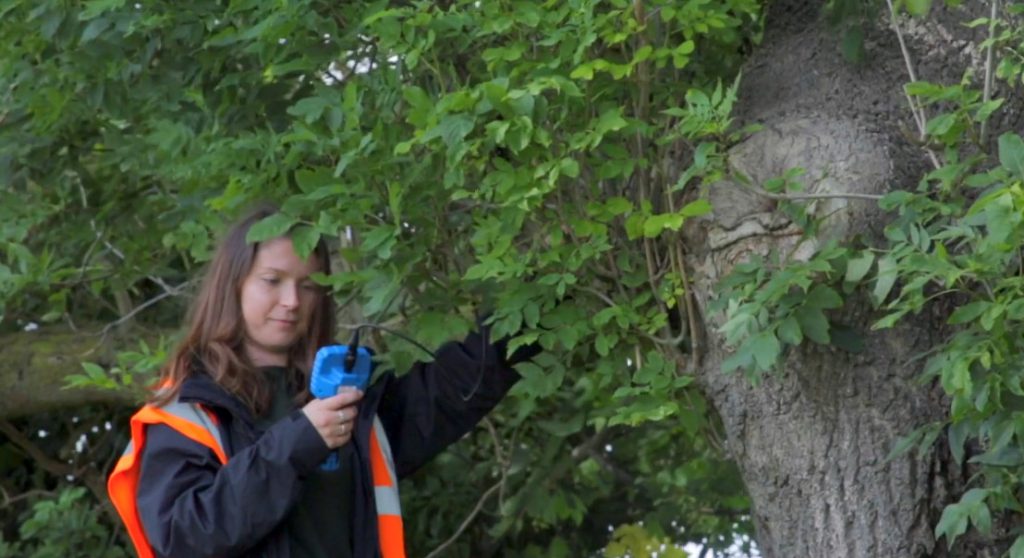Potential Presence of Bats Across Suffolk
Acknowledged as being largely rural, the county of Suffolk in the East of England offers a vast quantity of towns located in countryside areas, with an estimated 40% of the population living in green spaces. By the highest populations, notable parts of the county include Ipswich, Lowestoft, Bury St Edmunds, Haverhill, Felixstowe, Sudbury and Stowmarket.
Considering the level of biodiversity throughout an area as natural as Suffolk, protected species are expected to see it as a haven, featuring suitable roosting features, prey for sustenance, and overall climate to facilitate various listed animals. Of all European protected species such as barn owls and reptiles, bats are often the most common.
The prevalence of bats in a multitude of settings makes for concern in all proposed developments. Before the developer in charge of the planning project is able to move forwards without any worries of bats disrupting or being disrupted by the works, a bat survey organised and executed by a skilled, trained and qualified ecological consultant is a necessity.
Confirmed Species in the County
Bats with confirmed identification in the county of Suffolk include the barbastelle bat (Barbastella barbastellus), Brandt’s bad (Myotis brandtii), brown long-eared (Plecotus auritus), Daubenton’s bad (Myotis daubentonii), Leisler’s bat (Nyctalus leisleri), lesser horseshoe bat (Rhinolophus hipposideros), Natterer’s bat (Myotis nattereri), noctule bat (Nyctalus noctula), common pipistrelle (Pipistrellus pipistrellus), Nathusius’ pipistrelle (Pipistrellus nathusii), soprano pipistrelle (Pipistrellus pygmaeus), serotine bat (Eptesicus serotinus) and whiskered bat (Myotis mystacinus).
Groups Formed to Protect Bats
As well as nationwide protection from the Bat Conservation Trust (BCT), bats are given assurances of their safety through the formation of bat groups that apply to individual areas. Specifically focusing on the county of Suffolk, conservation regarding bats is managed, encouraged and promoted by the Suffolk Bat Group. Although the group doesn’t have a dedicated website, you can learn more via the Suffolk Bat Group Facebook page.
All over England, an estimated 90 bat groups were formed in the early 1980s to safeguard native bats. The Suffolk Bat Group was assembled in 1983, and since then, it has made efforts to create, enhance and protect hibernation sites, conduct bat surveys to benefit conservation, index records on bat data that have contributed to more than 2,200 files on around 13 species including two that are new to the county and one that returned after many years absent.
Examinations of Bats and Bat Roosts
Preceding your development works, you should ensure that no bat species are present on the site, moving on to the necessary bat surveys if bat occupancy simply cannot be ruled out. Either an earlier ecology survey such as a preliminary ecological appraisal (PEA) or observations from yourself, someone else involved in your planning project or the local council will do this, and from there, you will need to arrange a stage 1 bat survey known as a preliminary roost assessment (PRA).
Otherwise called a bat scoping survey or extended phase 1 habitat survey, the PRA mainly focuses on elements of the development site that could point towards the presence of bats. Typical evidence of bats includes bat carcasses, bat roosts, prey remains and natural or man-made features that could be a suitable habitat for bats. A categoric lack of any of these indicators will lead to a recommendation for planning consent in the accompanying bat report, but if it is not possible to do this, further surveys will be needed.
Stage 2 in the bat survey process is titled a bat emergence and re-entry survey (BERS). As the title suggests, it involves monitoring the entry and exit points for each bat roost on the site. A BERS is also known as a bat activity survey, as it revolves around bat activity on the site. With the use of specialist equipment such as bat detectors, multiple ecologists will visit the site during optimal times at dusk and dawn during the summer months to record bat echolocation calls, helping to increase the understanding of bats on the site and identify bat species and populations.
After completion of the bat surveys, the ecological consultant who undertook the assessments will put together a bat survey report to detail their findings. It will also include mitigation measures such as the introduction of bat boxes, and suggestions of further surveys that may be needed, such as transect surveys or other protected species surveys for great crested newts if any are found in the prior bat surveys. Once all conditions have been met, the report will confirm that the proposed development meets the requirements, informing the local planning authority that planning permission can be permitted.
Book in a Bat Survey Today
Offering coverage to all sections of the UK including Suffolk and other parts of the East of England, we ensure that our bat surveys to support adequate environmental management and planning applications are available to any and all developers that reach out to us. Every ecologist in our team has sufficient training and experience to lead bat surveys for your land or property development too, with relevant ties to the Chartered Institute of Ecology and Environmental Management (CIEEM) and Natural England.
It is a simple process to arrange any of our bat surveys or discuss your options with our team. All you need to do is check out our contact page, call us directly over the phone, or fill out our online quote form. One of our team will then use the details of your project and site to assemble a free quote. If you are happy with it, let us know, and we can work on choosing a suitable date to visit your site, conduct the required bat surveys, and help you secure a successful planning application.


